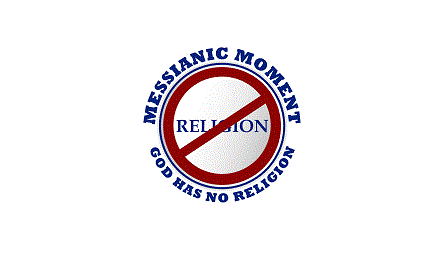In the last lesson you learned that to properly interpret the Bible you need to read contextually so that the word makes sense within the sentence, the sentence within the paragraph, and so on. But that isn’t enough: you also need to use hermeneutics as you interpret what you are reading to ensure that whatever message you get is the same message throughout the rest of the Bible.
Today we will take this a step further and talk about the spiritual understanding of the words and passages we read.
If you prefer to watch a video, click on this link: Watch the video.
The Jewish system of biblical exegesis you will learn about to day is called PaRDeS: I have bold-printed specific letters because this is not a word, it is an acronym.
The “P” stands for the word P’shat. The P’shat is the literal, or plain language meaning of the words. It is, at best, a topographical understanding of the Bible and is sort of like the old saying:
What you see is what you get!
The “R” stands for the Remes. This is a deeper, more spiritual meaning of the word(s) we read. I will be giving an example of the difference between the P’shat and the Remes later in this lesson.
The “D” represents the Drash (sometimes called a Derash). A drash is a story with a spiritually moral ending. When people refer to the lessons of Yeshua they call them parables, but they are, in essence, a drash.
Finally, the “S” represents the Sod. This is a mystical understanding, the kind revealed through a revelation or vision.
When we read in the Gospels how people said that Yeshua taught and spoke differently from anyone else they had ever heard, that he talked as a man with authority, it was because all they had been taught by the Pharisees and Scribes was the plain language of the Torah, the P’shat. Yeshua took the people one step deeper into God’s word, which is why they were so astounded at his understanding and interpretation.
The best example I have found, which I use often, to demonstrate the difference between the P’shat and the Remes is the Sermon on the Mount.
When teaching about adultery and murder, Yeshua would begin with “You have heard it said…” and follow up with “…but I tell you…”; in this way he showed the difference between the P’shat and the Remes.
He told them that they shouldn’t murder (P’shat), but then he taught that if you so much as hate in your heart, that is the same as murder (Remes).
He also said we are told not to commit adultery (P’shat), but that if we lustfully look at another, we have already committed adultery (Remes).
Yeshua showed us the spiritual understanding of the literal words, i.e., physically hating someone is spiritual murder, and lusting after someone, even if not acted upon, is spiritual adultery. This is what was so impressive to the people, who had never been given the deeper revelation of God’s word.
The parables (drashim) Yeshua told were stories that had a spiritual moral, but the people didn’t understand because they had only been taught to listen to the words, the P’shat, and were unable to grasp the Remes of his messages. I believe the reason Yeshua often said that those who have ears should listen, and those with eyes should see is that he was trying to tell them to listen with their spirit.
The Sod is something that I really find hard to describe, as it is mystical and, as such, a difficult subject to grasp. Perhaps good examples are Daniel understanding the writing on the wall and interpreting the dreams of Nebuchadnezzar, or Joseph interpreting the dreams that Pharaoh had. These were visions that were indecipherable from a literal view, but on a mystical level were understood to be prophecies about events that would happen in the real world.
There is a “catch”, however, with regard to using the Remes (and Sod) when you are interpreting the Bible: you need to have spiritual eyes to see spiritual things, and (I believe) the only way to get spiritual eyes is to see through the Ruach HaKodesh, the Holy Spirit. When we read the Bible we will be shown the Remes by the Ruach, but if we don’t have the Ruach, we have no better chance of seeing God’s spiritual messages than color-blind people have when taking one of those “what number do you see” tests you get when applying for a driver’s license.
Maybe this is why so many people with biblical knowledge have so little understanding of what they “know”.
That’s it for today’s lesson. You now know you must read the Bible for yourself and how to use Circles of Context and Hermeneutics so you can properly interpret the meaning of the words you read. You also now know there is a deeper, spiritual meaning to the written words and to ask the Ruach HaKodesh to show it to you.
In the next lesson we will talk about extra-biblical resources available to further help you properly interpret the Bible.
Until next time, L’hitraot and Baruch HaShem!
